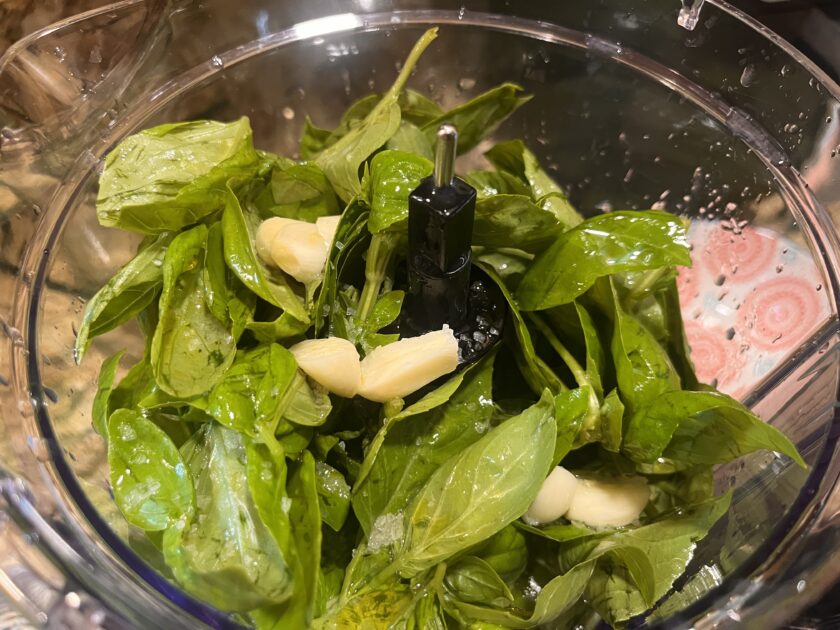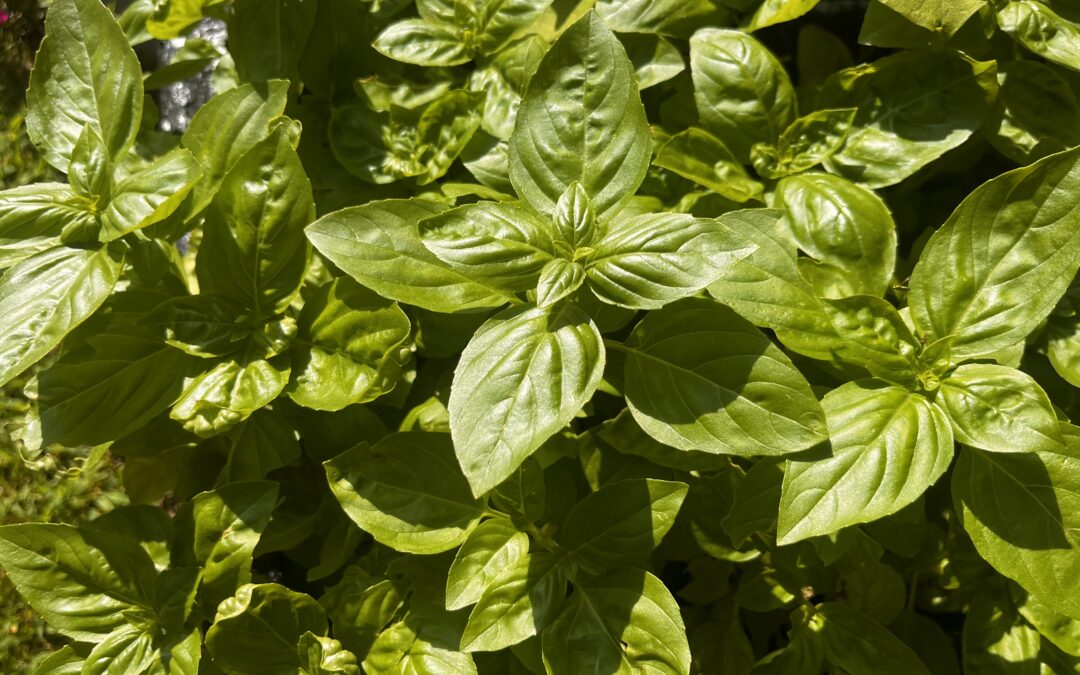One of my favorite rewards from the summer garden is having nonstop basil at my disposal. An entire cookbook could be filled with recipes that could be enhanced with the addition of fresh basil. Fortunately, my garden is practically overflowing with basil, its fragrant, deep green leaves waiting to be picked, just steps away from the kitchen. If your garden isn’t bursting with basil, allow me to offer some helpful tips.
First of all, make sure you plant enough basil plants to allow for regrowth after picking. In my family, we use a lot of basil in the summer, so one or two plants would not cut it. If you strip down the entire plant, you will need to wait a while for it to recover. Since I cook with basil almost every day in the summer, I plant loads of basil so that I can alternate which plants I am picking from, allowing them to regrow in between harvests. Of course, the least expensive way to plant basil would be from seed. But basil is strictly a warm-weather plant that is very sensitive to cold temperatures, so planting from seed gives you a narrow growing season. In our Shore Local area, I often find young basil plants sold in a large bowl for a decent price. The key is to take the plants out of the bowl and divide them into separate plants, spaced with plenty of room to grow in your garden. I am usually able to find 10 or more plants in these basil bowls. Once these individual plants are given their own space, they will each grow into larger plants.

Another key way to get more out of your basil plants is how you harvest them. Instead of choosing a leaf here or there from the top, you should cut lower on the stem where two leaves meet. If you cut just above this leaf node, your basil will branch out and become bushier. You are basically pruning your basil as you eat it. You can also use these cuttings to try your hand at propagating your basil by attempting to root the cutting in water or soil. If you do not snip the upper stem from your basil plant, it will most likely grow one tall shoot that will flower sooner than a pruned plant. If your basil plant does start to flower, cut the flowers and top off the plant to prevent it from going to seed. The good news is, these flowers are also edible and would be a pretty and delicious addition to your favorite salad.
If you have followed some of these tips and are blessed with a bumper crop of basil, you will want to preserve some for those long winter days when we need the hope of spring. One of the easiest ways to save this fresh flavor for after summer is to place a few cut leaves in ice cube trays, cover with quality olive oil and freeze. Once the basil/olive oil ice cubes are frozen, pop them out of the tray and into a freeze-safe baggie. When you are longing for summer flavor, simply pop some cubes into the pan while cooking your favorite dishes. Of course, you can always make pesto. While it tastes delicious fresh, you can also freeze pesto. However, I would recommend freezing it without cheese and adding the cheese when you are ready to use the pesto. Did you know that you can also use other herbs when making pesto? You can make pesto with cilantro, parsley, sage, thyme, oregano, spinach, mint, or kale. Though pine nuts are traditionally used in pesto, you can also substitute them with other types of nuts, or with sunflower seeds, or pepita seeds.
Some of my favorite ways to use basil are in caprese salad, pesto, bruschetta, pasta salad, or in a toasted basil/tomato sandwich with a drizzle of olive oil. For a unique twist, try a sweet and savory combination by making a watermelon/basil salad. Nothing beats fresh basil in lasagna, meatballs, or shrimp scampi. Now that you are good and hungry, run out and plant some basil. You will thank me later. If you would like some of my favorite basil recipes or more growing tips, send your questions to shorelocalgardener@gmail.com.
Photos by Steffen Klenk
Tammy Thornton lives with her husband, children, and crazy pets while enjoying a life of gardening, cooking, and going to the beach.













